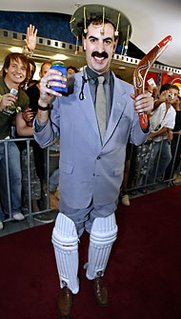 The image of Che Guavara, sporting a beret with a single star on it, has been popular since his execution in 1967 in Bolivia, where he tried to mastermind a communist uprising.
The image of Che Guavara, sporting a beret with a single star on it, has been popular since his execution in 1967 in Bolivia, where he tried to mastermind a communist uprising.The photo was taken by Alberto Diaz (aka “Korda”) and became iconic.
Since Guavara's death, his portrait was put on everything from posters and T-shirts to schoolbags.
Che became a symbol of idealistic revolt for many, including students taking part in the 1968 Paris uprising in 1968 and Palestinians launching terrorist attacks against Israel in 2000.
As part of Target's positioning as a trendy discount chain, it decided to tap into the motley of symbols of retro cool, following the current trend at populate flea market stalls as well as in chic designer boutiques.
Target featured Che’s image on a music CD carrying case, wearing a set of small earphones, thus implying that he was tuned in to trendy music players such as iPod.
Target was not the first company to choose Che: Swatch put Guevara on a wristwatch and Smirnoff vodka featured the picture in an advertising campaign.
What Target didn't take into account, was the sensitivity of its Latin customers.
Guevara as a romantic hero is a myth.
Ernesto Guevara de la Serna (aka Che Guevara or el Che) decided as a medical student, that the socioeconomic inequalities in Latin America could only be remedied by revolution.
He became a Marxist and joined Fidel Castro's paramilitary 26th of July Movement, which seized power in Cuba in 1959.
He served in various important governmental posts.
In this capacity, Guevara signed at least 600 death warrants and executed children by firing squads.
According to the Investor's Business Daily, Guevara was responsible for at least 2,000 deaths during Cuba's 1961 mass executions.
The Cuban exile community in the US collectively took a stand against sporting Che’s image on Target's merchandize.
The story quickly hit the newswires and numerous blogs pounced on it.
They stated that Guevara was one of history's brutal mass murderers, in the same league as Pol Pot, Pinochet, Osama bin Laden and Adolf Hitler.
Showing excellent crisis management, Target Corp quickly pulled all the CD cases from its shelves and issued an apology.
"It is never our intent to offend any of our guests through the merchandise we carry. We have made the decision to remove this item from our shelves and we sincerely apologize for any discomfort this situation may have caused our guests."
Wall Street Journal columnist Mary Anastasia O'Grady applauded Target’s reaction, stating that Target made an "admirable decision" to correct the actions of some company employees who "allowed Target to become a target itself of the Che myth."
The irony of it all is, that Guevara’s iconic portrait is commercially used in the same capitalist consumer society that he died fighting to overturn…
